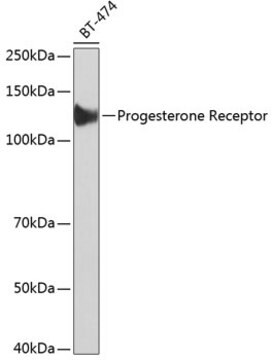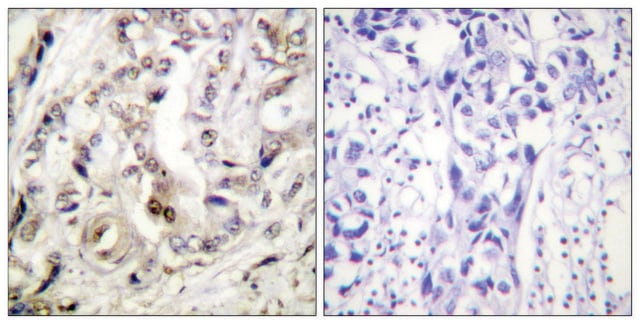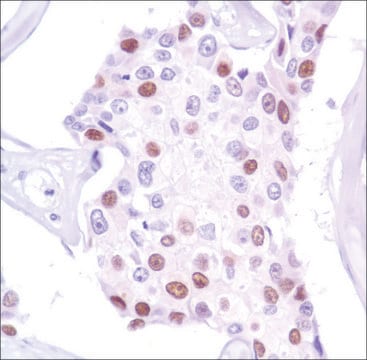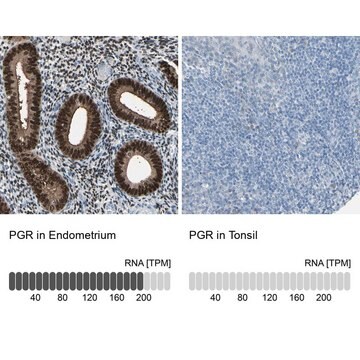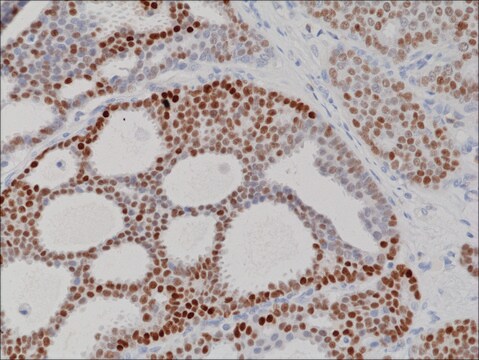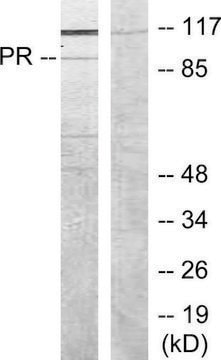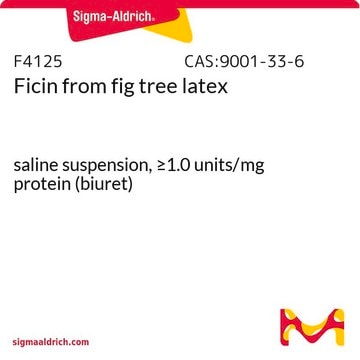MABS1235
Anti-Progesterone Receptor A/B Antibody, clone 488/H3
clone 488/H3, from mouse
Synonyme(s) :
Progesterone receptor, PR, Nuclear receptor subfamily 3 group C member 3, Progesterone Receptor A/B
About This Item
Produits recommandés
Source biologique
mouse
Niveau de qualité
Forme d'anticorps
purified immunoglobulin
Type de produit anticorps
primary antibodies
Clone
488/H3, monoclonal
Espèces réactives
human
Technique(s)
immunocytochemistry: suitable
western blot: suitable
Isotype
IgG1κ
Numéro d'accès NCBI
Numéro d'accès UniProt
Conditions d'expédition
wet ice
Modification post-traductionnelle de la cible
unmodified
Informations sur le gène
human ... PGR(5241)
Description générale
Spécificité
Immunogène
Application
Western Blotting Analysis: A representative lot detected endogenous progesterone receptor isoforms A & B (PR-A & PR-B) in human breast cancer T47D cell lysate, as well as exogenously expressed PR-A & PR-B in transfected DCIS.COM human ductal carcinoma in situ (DCIS) breast cancer cells, but not in untransfected DCIS.COM cells (Courtesy of Dr. Dean Edwards, Baylor College of Medicine, USA).
Qualité
Western Blotting Analysis: 0.5 µg/mL of this antibody detected both isoforms A and B (PR-A & PR-B) of progesterone receptor in human breast cancer T47D cell lysate.
Description de la cible
Forme physique
Autres remarques
Not finding the right product?
Try our Outil de sélection de produits.
Code de la classe de stockage
12 - Non Combustible Liquids
Classe de danger pour l'eau (WGK)
WGK 1
Point d'éclair (°F)
Not applicable
Point d'éclair (°C)
Not applicable
Certificats d'analyse (COA)
Recherchez un Certificats d'analyse (COA) en saisissant le numéro de lot du produit. Les numéros de lot figurent sur l'étiquette du produit après les mots "Lot" ou "Batch".
Déjà en possession de ce produit ?
Retrouvez la documentation relative aux produits que vous avez récemment achetés dans la Bibliothèque de documents.
Notre équipe de scientifiques dispose d'une expérience dans tous les secteurs de la recherche, notamment en sciences de la vie, science des matériaux, synthèse chimique, chromatographie, analyse et dans de nombreux autres domaines..
Contacter notre Service technique
